



“There is nothing new under the sun, but there are new suns.” —Octavia Butler

30-35 minute conversation, or the time it takes to prune an old tree.
![]()
A CONVERSATION WITH ALINE FRAZÃO AND SATTVITRI
For singer-songwriter Aline Frazão and gamelan musician Sattvitri, their upbringings and community histories have deeply influenced their practices, which span continents and genres. Their respective styles are a dynamic portrait of where they’ve been and how they’ve grown over time. In the following conversation, they talk about the challenges and opportunities that arise when collaborating with people who have different perspectives, and underscore the importance of cultivating an open mind as well as open ears at all times.
Jessica Ferrer: I would love for both of you to share a little bit about the places you call home right now: Angola, Berlin, Indonesia, and your upbringings. How do those specific contexts make their way into your music?
Sattvitri: Well, home for me is a place where I feel safe and comfortable. For me, a place or home can be a building, a family, and a group of people who receive me warmly. Also, my students. My students are always involved in my artistic process; they have helped transform me into who I am today. I would say that if they weren’t in my life, I wouldn’t be at this point.
In Ilang Liang’s music, the specific context is the instrumentation and motifs of the song. The instrument used for Ilang Liang is gamelan Gender Wayang, which I really like. It is my favorite kind of music. Making works using Gender Wayang and having them played by my students is a very happy thing for me. Ilang Liang’s work has the same motif between the beginning of the song and the end of the song, which I interpret as “going out and entering the house through the same door.”
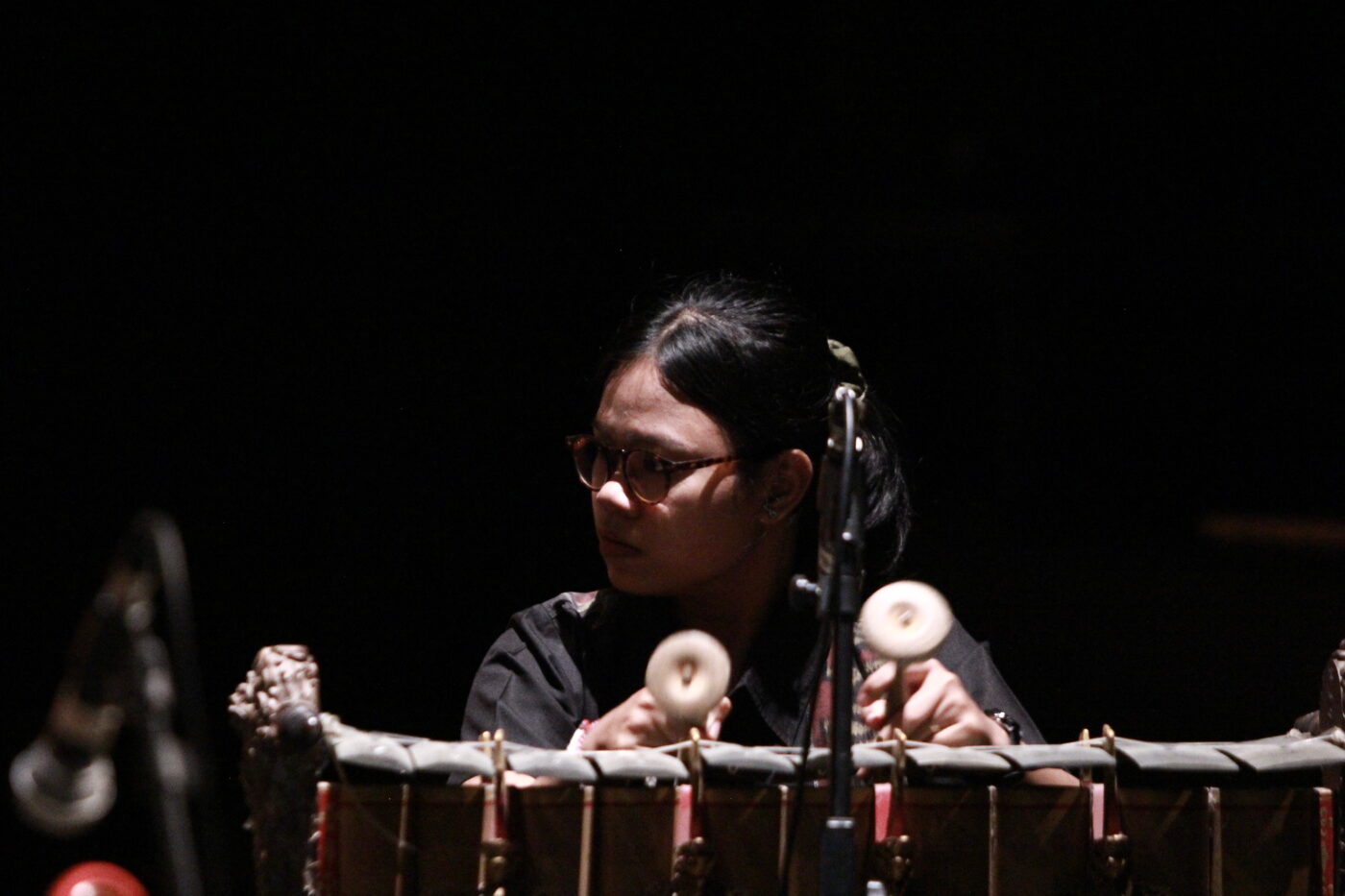
[ID: Sattvitri stands behind the Gender Wayang instrument, mallets poised at the ready.]
Aline Frazão: Well, as I told you in the beginning, I was born and raised in Luanda, the capital city of Angola. It’s in the southwest part of Africa. I was born in 1988, so only thirteen years had passed since the independence of Angola. That was in 1975, and after Independence, the country entered the civil war that lasted until 2002. I’m telling all of you all of this because it’s impossible to talk about my home, my homeland, without talking about the social and political context in which I grew up, and that had a huge impact in my life, in the life of my family, in the life of my community, and of course, in the things that I write and the way that I see myself as an Angolan artist.
Growing up in Luanda meant listening to a lot of radio — we didn’t have too much television in the beginning of my childhood — a lot of music from Cape Verde, Brazil, and also pop music from all around the world. Luanda has a very open atmosphere for music. It’s a very cosmopolitan city. It’s one of the oldest cities on the continent.
My family background is a mixture from Angola, Cape Verde, Portugal, and Brazil. All of these components or variables or family background came into place to build up my first musical identity when I started composing. I think I come from a very creative place. All of these contacts created the very vivid cultural environment in which I grew up, especially with literature and music but also in other arts like theater.
All of these relationships with Angola are present in my music and the way I try to move as an Angolan artist in Europe. I’ve been living in Europe for more than ten years and my music is also shaped by this state of being an immigrant in Europe: as someone who has moved away from home, but is creating a home in different places. This question about describing my home is actually very hard for me, having moved so much and being in touch with different cultures, different languages, and having that privilege. I would say. My home, of course, is Angola; Luanda is my city. But at the same time it’s not, it’s changing, and at this moment it’s Berlin.
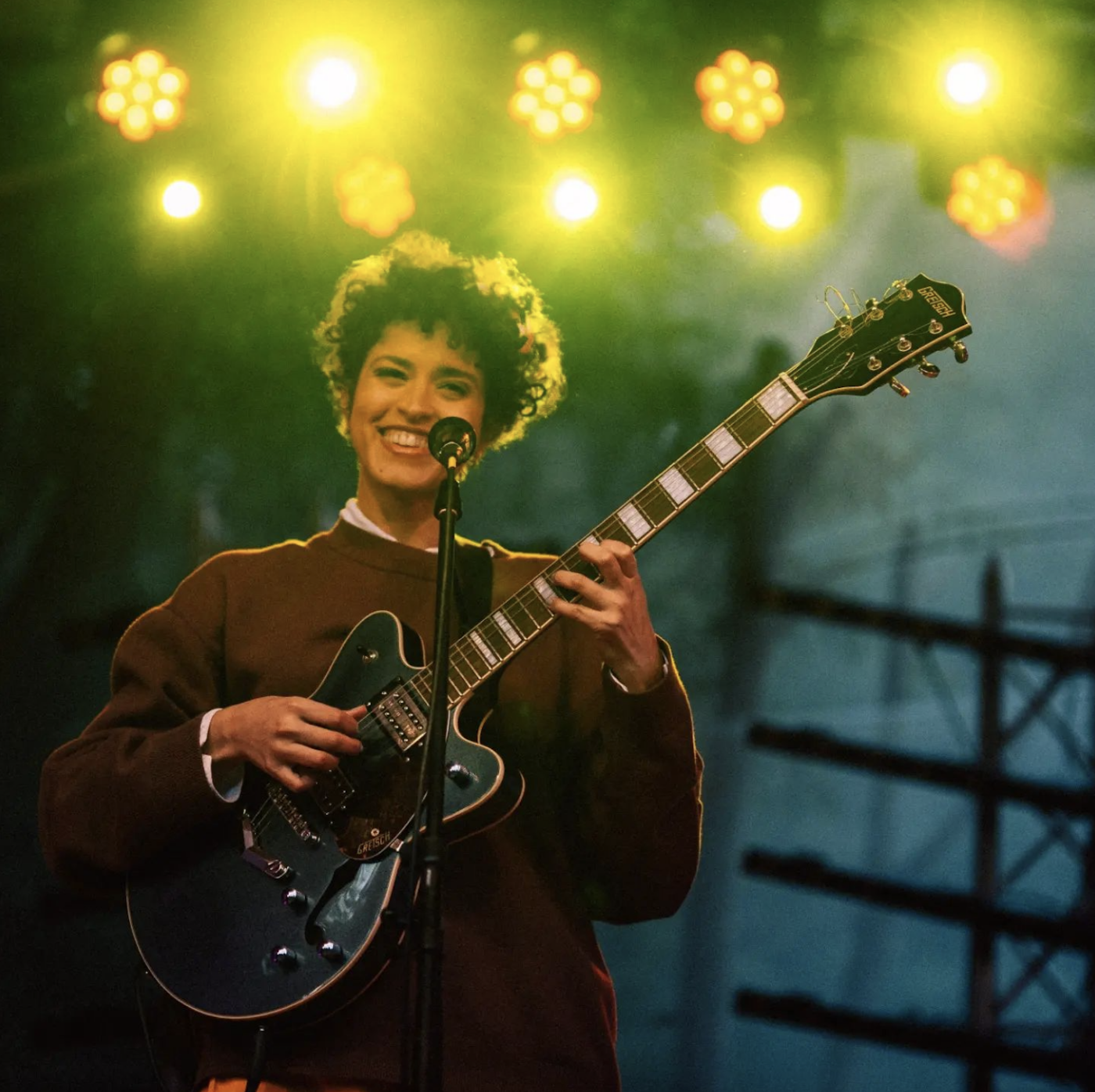
[ID: Aline Frazão stands on a stage playing an electric guitar and smiling widely at the audience. Flower shaped lights glow in the distance above her.]
Jessica: Thank you both. I know home is such a complicated thing for so many people, and I really appreciate you both sharing a little bit more about that. It leads nicely into my question for Sattvitri about the piece Ilang Liang, which means “disappearing for a moment to find happiness.” Like Aline, you talk about leaving home and it seems like music is really important for processing these big moments in your life. Can you talk a little bit more about how it helps you sort of disappear to find happiness or a process these times?
Sattvitri: Bali is the place I call home, where I was born. It’s where I process my life, grow, interact, and experience a lot of things with the support from my community. I live with so many people around me. All of the routine in Bali made me happy because I grew up surrounded by every element that I call home.
I went to Central Java to explore and study Indonesian art at the Indonesian Institute of the Arts in Surakarta. In Surakarta, I learned a lot about Javanese gamelan, how it compares to Balinese gamelan, and how Balinese Gamelan traveled to Java. Not only that, I also learned to compose gamelan. I found out how different the process of composing music in Bali is from composing music in Surakarta, and that was great for me.
All the things I’ve learned have inspired me so much: the things I’ve discovered during this exploration for my values, my principles. I went to Surakarta with all the gamelan that I had when I was in Bali, and then when I came back to Bali, I brought back so much Javanese gamelan within me, in terms of knowledge, inspiration, and many other elements about gamelan.
Jessica: Thank you. That’s awesome. I love hearing that you found a sort of exchange, and you were kind of carrying this knowledge from both places with you. And now it’s going to be informing your music and your practice.
Sattvitri: Thank you.
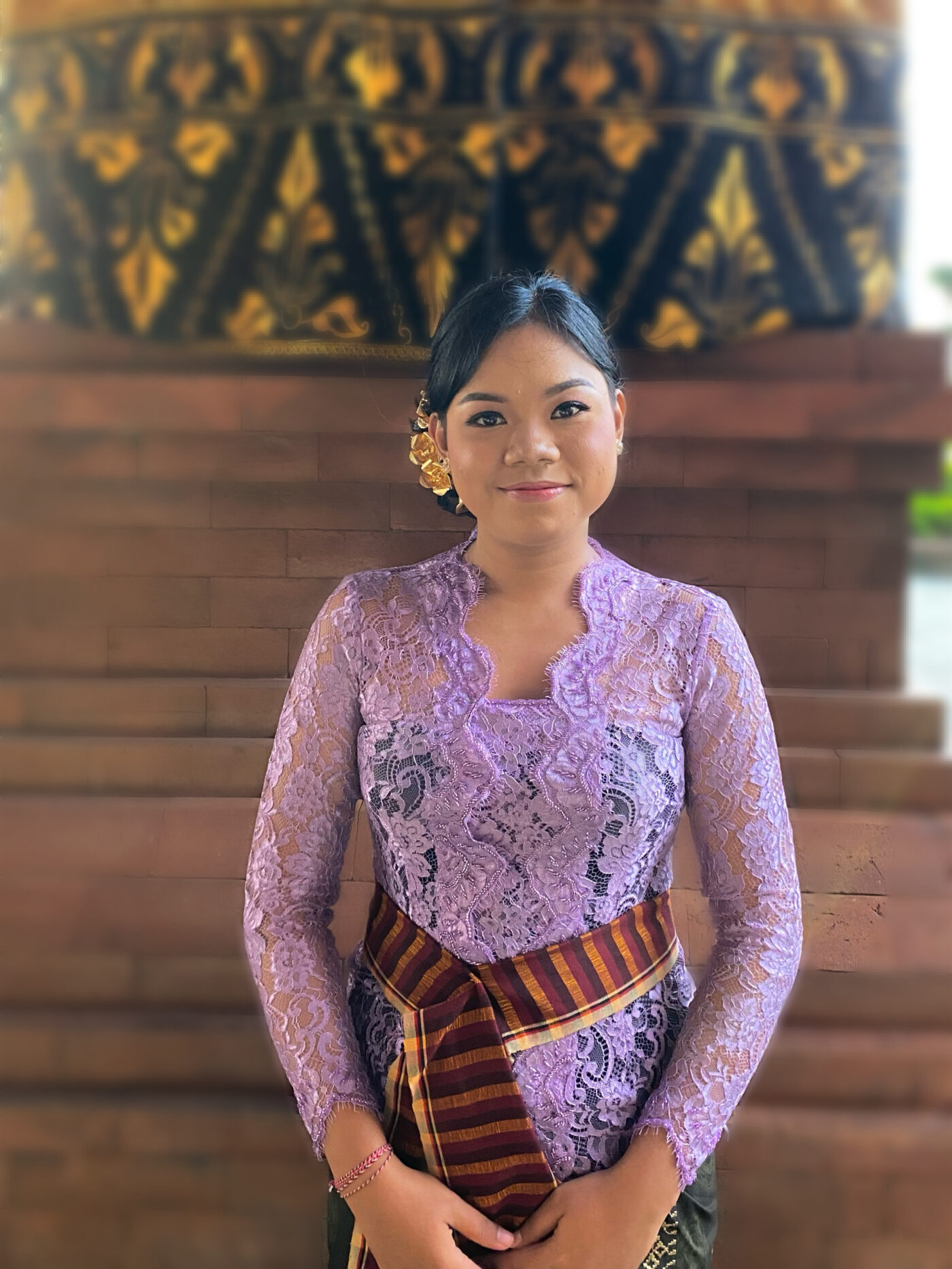
[ID: Sattvitri poses in traditional Balinese clothes: a lacy purple dress with a striped sash in gold, black, and maroon. Her hair is tied back with a piece of golden floral jewelry behind her ear.]
Jessica: Aline, I would love to hear a little bit about your writing practice. I will say I really love the twist in your short story for the Anthology with the instrument. I wasn’t expecting that! Alongside composing songs, you’ve written stories and published articles. How similar or different are those processes for you? Do they inform each other at all?
Aline: I’m thinking about what Sattvitri said. Her experience about going to a music institute to learn a traditional instrument of her country and investigate her musical language. Actually, we do not have a music institute where we can learn a traditional instrument or about traditional Angolan music in Angola. So growing up, I had a chance to do other stuff like dancing, for example, [and] doing some theater. I went to dance classes, not traditional, more like ballet and contemporary modern dance.
I started writing as a way of understanding what was going on around me, as a way of expressing some of these doubts or some of these questions, and also some of the things that worried me about what was going on socially and politically around me. But also as a way of healing and of investigating new languages, not only the Portuguese language — which is the language that I write in — but as poetry. It is very different for me to write poetry for music as lyrics than to write short stories, or long format narratives, or political articles. All of that touches different parts of me, you know, and activates different parts of expression. But it is certainly a way of connecting with the world, with each other.
But I have to say that with music, we have an extra layer, which is that after writing the lyric, you get the chance to sing it to an audience. So that creates another layer of communication of bonding with people and with your audience in both recordings and live music.
Writing is a very important part of my life because it is a way of putting things together around me, through reading, especially through literature and poetry, understanding the history of my country and in general. It’s a way of constantly learning and being connected to others.
Writing is a very important part of my life because it is a way of putting things together around me, through reading, especially through literature and poetry, understanding the history of my country and in general.
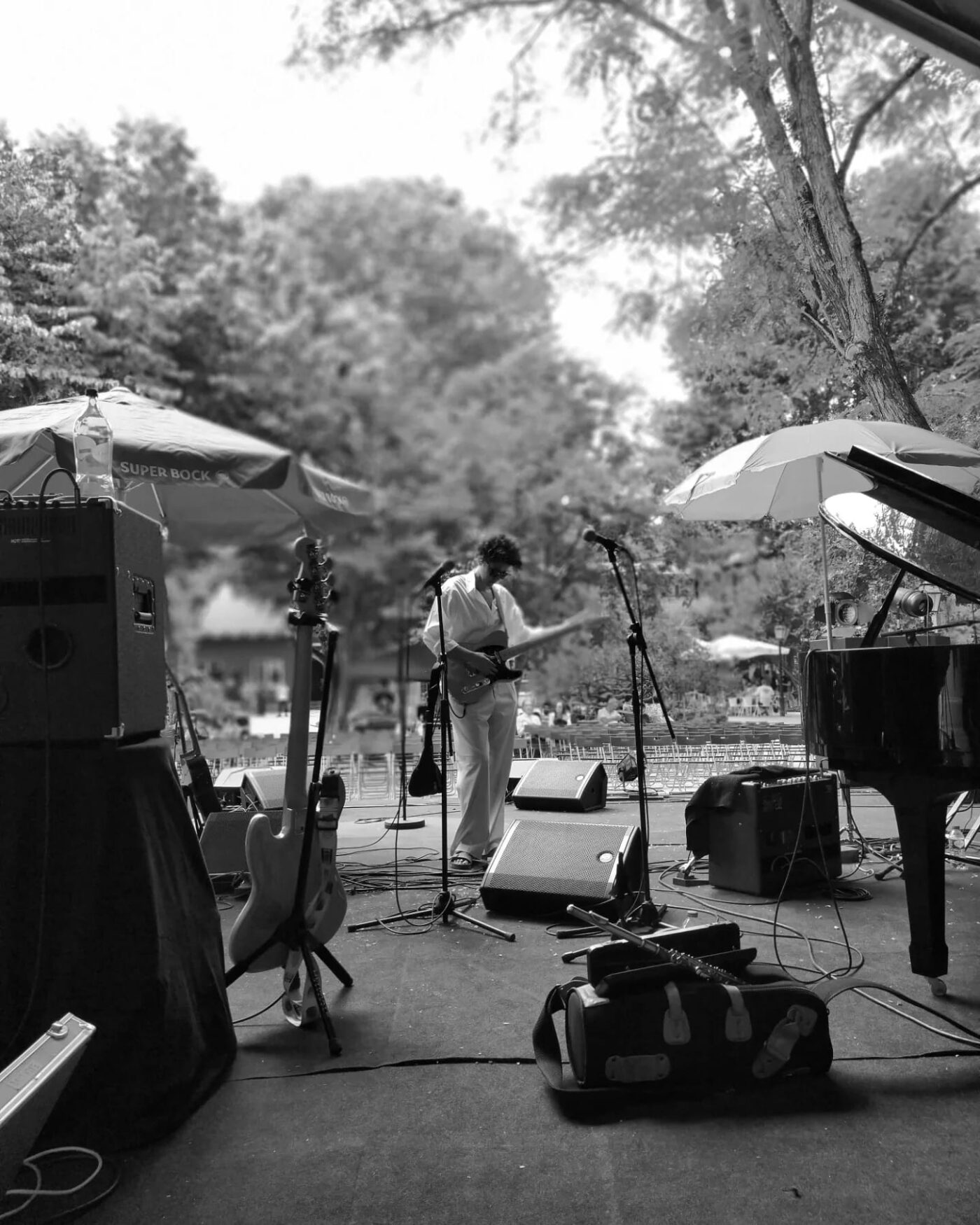
[ID: Aline stands playing guitar in an outdoor performance space surrounded by a piano, amps, and other instruments.]
Jessica: I want to talk a little bit about your M³ (Mutual Mentorship for Musicians) duo commissions, because I think both of you have now alluded to collaborating with other people as a huge part of making music and being in community. I was impressed by how seamless the collaboration in both the music and the imagery was, but I feel like it probably wasn’t that simple or easy when you were in the process of making it. In Aline’s piece with Naomi Nakanishi, “Mirrored Hands,” there’s that overlay of the voices talking over each other in Portuguese and English that really moved me. And then, Sattvitri, your piece with CC, “Suryaning Giri Danu,” there’s that call-and-response, the alternating voices. What was it like to work together to translate and combine your individual desires into these co-authored works?
Sattvitri: Hmm. Yes, if you ask me how I felt, I actually felt pretty nervous [about not being able to keep up with my duo partner]. Me and my partner, [CC Sunchild], come from different cultural backgrounds, different languages, even different time zones. Everything was completely different. I’m from a traditional music background and my partner is from modern music, but I found the process pretty fun. Thankfully my partner always supported and accepted what I did so that the process of creating the work went well even though there were some obstacles. We could overcome these obstacles because we always encouraged each other.
We both accepted it, calmed down, and then were happy with the process. Everything went well, but there were some challenges. We got over it. The thing was not to rush, not to be short-sighted. We were relaxed about the process, but we were also serious.
In making “Suryaning Danu Giri,” there are two things that we try to explain. One of them is about the tone of Bali and its technical side. The second is determining the idea or ideas for our duo’s [commission]. My partner immediately agreed to the idea that I gave, namely the ecosystem of the sun, mountains, and lakes. After the ideas and ideas materialized we immediately drafted the work. We communicated via IG messages and phone calls. Every time there was a problem and input we always communicated well and always accepted the input that was given. The point is that the process of creating “Suryaning Danu Giri” was very enjoyable; I didn’t expect to finish the work.
Aline Frazão: So in my case, you know, it was also hard because me and Naomi are very different. We have different personalities; we have different languages. I speak English, but still, at the same time I feel a bit frustrated trying to express some ideas. We come from different backgrounds. We were in different time zones. They were in New York, and I was in Berlin most of the time. Also the fact that Naomi is finishing their music education in Berklee and I am an autodidact. I never went to any music school, so I learned to play the guitar, sing, and write my songs, I usually say, in the streets, with my family and friends and listening to music, lots of music, and with the help of the internet. So we had a hard time communicating.
Also I have to say that being women and non-binary people, and racialized people in the music business — at the same time you are doing the cohort, there’s a lot of tension in our daily lives, in our work lives, you know? Expectations about how to work with other people, how to create our space in the piece. There are all of these insecurities that you bring with you because of this context of tension and difficulties that women, non-binary people, and [racialized] people find in the music business. It’s hard. So all of that was our baggage, along with our will to create something that would reflect both of our experiences.
We communicated through Zoom, and we had the idea of creating a Zoom video for our piece. It was kind of a meta video reflecting the process of making it, so that’s how this section of the piece where we talk over each other happened. We came into a conflict. It was hard, we had a conversation about it, and I proposed to Naomi, “Why don’t we record three minutes of audio telling all of this? Talking about all the things that we feel. It can be free. It can be fiction. It can be true. We can be real or not real, but we’ll use words and speak, and then we’ll put together the two audio tracks and we’ll see what happens.” And Naomi said, “That’s actually a great idea. Let’s do it.”
It became our favorite part of our piece, and this was very rich, because we could bring the truth of our collaboration to the piece. In this way it was us there, and we could also understand this better, and after that everything went very fluidly until we finished the piece. It was a very, very interesting and rich experience, but also hard.
I think hardness is part of it, though. It’s never easy, especially co-authoring with someone else who is so distant from you in a way. But you can always find some spot where you can connect and do something beautiful together.
We have to be flexible and not fixated on one idea or one line or a single plan. To create a piece is a long process, so if we are being flexible, we can improvise and know that the idea could be the last piece. The last piece could be the idea.
Jessica: It sounds really important, and maybe not encouraged enough, for artists to be vulnerable: Sattvitri, you said you were nervous, and I think that’s completely natural, and Aline [mentioned] that vulnerability of figuring out and navigating a conflict with another artist. Why is it important, or why should it be encouraged, for folks to be vulnerable, or to put themselves in these positions where they’re challenged?
Sattvitri: I think to do all of this we have to be open and open-minded. We need to have an attitude of acceptance and respect for all input given by our partners. All of these things that I mentioned are very important in creating something in collaboration. We cannot put our personal opinion, feedback or ideas as the most important thing. We must give our partner a chance to bring what they want within the project and always be respectful. If we don’t do that, there is no stability. The process will crash. If someone is dominating, if someone is thinking, “Oh, I am lacking, or my partner is lacking,” then the process will stagnate.
I want to mention one more thing: the creative skills or abilities of composers are indispensable in composing music. If we could put all of those skills together and then try to adapt them, it would create something really good. We had to overcome the thought of what could be a challenge, like [the fact that] we’re not the same age, we’re on different levels. Overcome all thoughts that might hinder us from making the work. To be creative with partners, or to collaborate, that’s number one. And I’ll also add: teamwork. In this way, we must be liquid. We have to be flexible and not stick to one idea or one line or one plan. In other words, the idea can be the progress and the progress can be the idea, something like that. Creating a masterpiece is a long process, so if we are flexible, we can improvise and know that the idea can be developed.
Aline: Whoa! That’s a lot of wisdom there, Sattvitri. Very nice.
Sattvitri: Thank you.
Putting those difficulties on the table and looking at them, it creates this important magic of connection, of empathy, of understanding each other, and of creating something that is more than beautiful. It’s alive. It’s truth.
Aline: Thank you. I think that’s a very good question, Jessica, the question of vulnerability and the importance of that in our artistic work today. You know, where we are, it’s so hard to make a living as musicians. There are so many beautiful projects out there, and everyone wants to pay their bills, and everyone wants one way or another to achieve success. Success is so connected, unfortunately, with strength, flawlessness, perfection. It’s important to dismantle all of that and try to reconnect with what Sattvitri was saying, which is some kind of humility.
It’s very refreshing to hear what Sattvitri is saying because it’s exactly that: you have to try to work together. And sometimes that means putting your weapons down, because as I was saying before, it is hard. You know, I have tried being vulnerable, I have tried being strong and very tough, and neither of them worked because somehow for women, it’s either you’re too arrogant or you’re too soft, and it’s hard for people to take you seriously sometimes. And this is not only for music, it must be for any other business, I imagine. But anyway, you should try to stay connected to why you choose to make art.
In our case it was fundamental for us to be vulnerable with each other, to express our insecurities. Putting those difficulties on the table and looking at them, it creates this important magic of connection, of empathy, of understanding each other, and of creating something that is more than beautiful. It’s alive. It’s truth. There’s something real there. It’s not about achieving something beautiful. It’s about trying to investigate and create something that is really meaningful for each of us.
So it was important to have that conversation and to express our frustrations, and accept that sometimes we cannot be as generous, as Sattvitri was explaining and describing before. Sometimes we are super flawed human beings, and we are dealing with a lot of pressure, and things are hard, and we make mistakes. And guess what? It’s okay. It can be part of it. You can learn from them. You can learn in the process and grow from that, and in the meantime, create something that maybe can move other people.
Sattvitri: That is absolutely correct, Aline. Everything, anything that hurts, every failure that we have encountered, it actually helps us to find ourselves. And not only that, it encourages us to move forward, to keep going, to thrive. From there we can be better.
Header Photo Credits:
Photo of Sattvitri by Nur Sholeh; photo of Aline Frazão by Fradique.
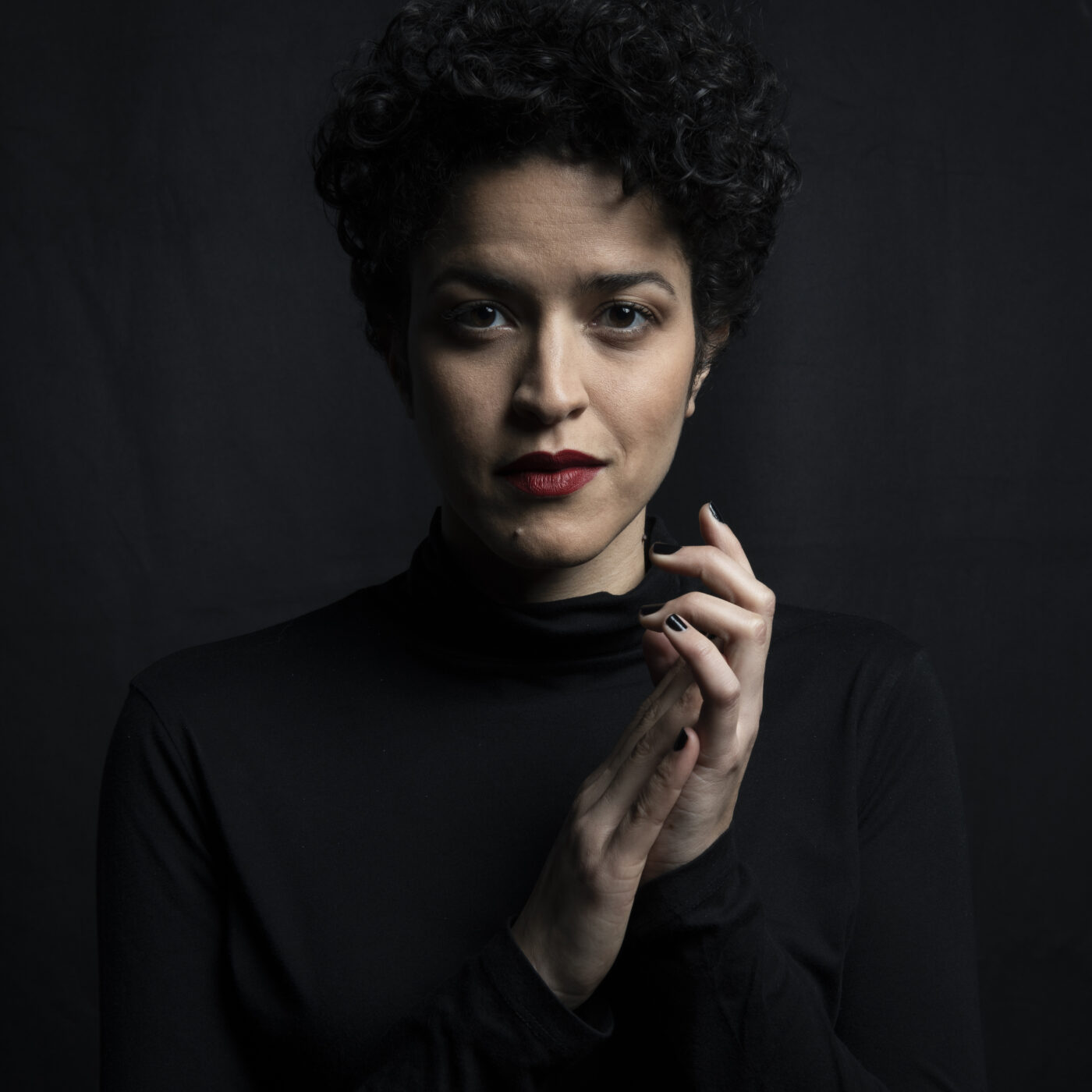
[ID: Aline, a woman with light skin and dark curly hair gazes into the camera, hands posed delicately in front of her. She is posed against a dark backdrop with only face and hands visible.]
Aline Frazão
She // Her // Hers
Luanda, Angola and Berlin, Germany
Aline Frazão is an Angolan singer, songwriter, composer, producer, and performer born and raised in Luanda, Angola and living between Luanda and Berlin. Frazão has released five studio albums — Clave Bantu (2011), Movimento (2013), Insular (2015), Dentro da Chuva (2018), and Uma Música Angolana (2022) — and in 2020 made her film debut with the original soundtrack to Ar Condicionado, a feature film directed by Fradique that premiered at the International Film Festival of Rotterdam. Frazão has published several short stories, chronicles, and essays, and in 2021 she accepted the invitation to participate in the theater show Amore, an international co-production of the Italian company led by Pippo Delbono.
alinefrazao.com
Instagram: @alinefrazao_
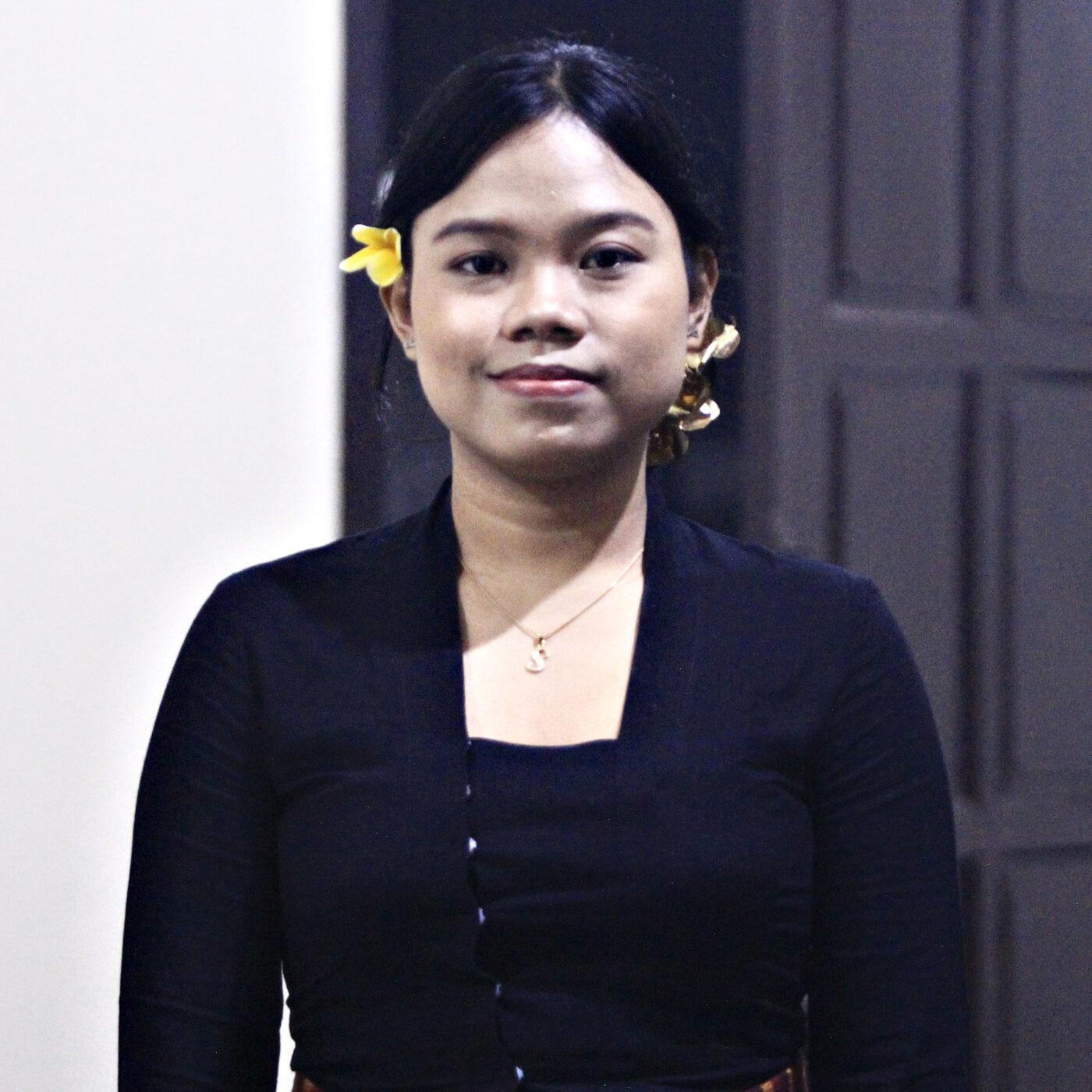
[ID: Sattvitri, a woman with light brown skin and dark hair, stands facing the camera with a small smile. She has her hair tied back with a yellow flower over one ear.]
Sattvitri
She // Her // Hers
Bali, Indonesia
Ni Made Ayu Dwi Sattvitri is a Balinese gamelan musician who is now studying music composition at the Indonesian Institute of Arts, Surakarta. Sattvitri founded a studio called Sanggar Seni Palwaswari in 2017, and also has a music group called MusisArtt. Some of the events and workshops that Sattvitri has participated in include: Bali Jani Arts Festival, Ubud Folk Festival, Fraksi Epos Festival, Bukan Musik Biasa, Kata Bunyi Forum, and Sattvitri is part of Mutual Mentorship for Musicians Cohort 5. Sattvitri has several music compositions from Balinese gamelan, namely Mutusake, Ngimbang, Ngembang Ngimbang, Langit Biru, Ilang Liang, Korochi, Sarasvati Puja, Kami San, Autotomi, and Linimasa.
Instagram: @sattvitrid
